Pacific Fisheries Bycatch Program
Videos
Note: These videos present various clips and are not intended to represent a quantitative outcome of the gear examined.
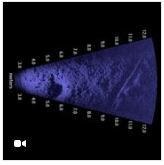
|
|
|
This video is from a study comparing the catch efficiency between conventional sweeps and modified sweeps on a groundfish bottom trawl.
The study was conducted off Newport, Oregon at water depths ranging from 192 to 202 m. The video shows 1.8 MHz Dual-frequency IDentification SONar (DIDSON) imagery of
the path of a trawl configured with conventional and modified sweeps. The conventional bottom tending sweeps consisted of 1.9 cm steel cable covered with continuous 7.5 cm
rubber disks over its length of 91.4 m. The modified sweeps consisted of 48 mm combination wire with 17.8 cm diameter disc clusters placed every 8.2 m intervals along their
length of 91.4 m. In concept, this design elevates over 95% of the sweep off bottom with a nominal height off bottom of 6.6 cm between the disc clusters. In this video,
the distance between the tracks left by the disc clusters on the modified sweeps are on the order of 3-4 m apart due to the sweeps angle of attack. An analysis of trawl
catch showed the catch efficiency between the conventional and modified sweeps are similar to each other. This 2018 footage is courtesy of Pacific States Marine Fisheries
Commission and the Oregon State University-Cooperative Institute for Marine Resources Studies group. The modified sweeps were manufactured by Foulweather Trawl, LLC. Research
funding was provided by the NOAA Fisheries Bycatch Reduction Engineering Program. Note: The imaging-sonar video is not intended to represent a quantitative outcome between the
conventional and modified sweeps.
|
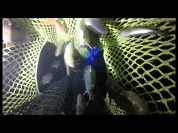
|
|
|
This video shows an open escape window bycatch reduction device (BRD) designed to reduce Chinook salmon
bycatch in the Pacific hake midwater trawl fishery. This video was collected during a project seeking to determine if artificial illumination
can influence which escape window Chinook salmon utilize when exiting the BRD. This video shows Chinook salmon, Pacific hake, Pacific herring,
and rockfishes interacting with the BRD. This 2015 footage is courtesy of Pacific States Marine Fisheries Commission and the NOAA Fisheries
Northwest Fisheries Science Center-Marine Habitat Ecology group. The BRD was manufactured by Foulweather Trawl, LLC. Research funding was provided
by the NOAA Fisheries Bycatch Reduction Engineering Program.
|
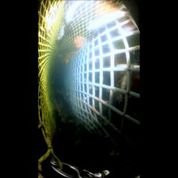
|
|
|
This video shows a flexible sorting grid excluder designed to reduce rockfish bycatch
in the Pacific hake midwater trawl fishery. Pacific hake and widow rockfish are shown interacting with the excluder during
the tow process. In addition, this video shows the catch of the trawl codend compared to the recapture net catch. This
2012-2013 footage is courtesy of Pacific States Marine Fisheries Commission and the NOAA Fisheries Northwest Fisheries
Science Center-Marine Habitat Ecology group. The BRD was manufactured by Foulweather Trawl, LLC. Research funding was
provided by the NOAA Fisheries Bycatch Reduction Engineering Program.
|
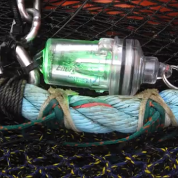
|
|
|
This video shows catches from a double-rigged pink shrimp trawl. The fishing line of one net was illuminated with green LED lights, whereas the fishing line of the other net was not illuminated. This video was collected during a project evaluating if simple enhancements to the visibility of the trawl fishing line could improve bycatch reduction for eulachon, an ESA listed species. This video primarily shows pink shrimp and eulachon smelt. This 2014 footage is courtesy of Oregon Department of Fish and Wildlife and the Pacific States Marine Fisheries Commission. Research funding was provided by the NOAA Fisheries Bycatch Reduction Engineering Program.
|
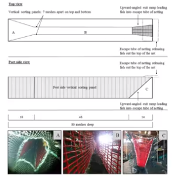
|
|
|
This video shows catches between the trawl codend and recapture net from a flexible sorting grid excluder designed to reduce sablefish, rockfishes, and Pacific halibut bycatch in the West Coast groundfish bottom trawl nearshore flatfish fishery. This 2014 footage is courtesy of Pacific States Marine Fisheries Commission and the NOAA Fisheries Northwest Fisheries Science Center Marine Habitat Ecology group. The bycatch reduction device was manufactured by Foulweather Trawl, LLC. Research funding was provided by the NOAA Fisheries Bycatch Reduction Engineering Program.
|
